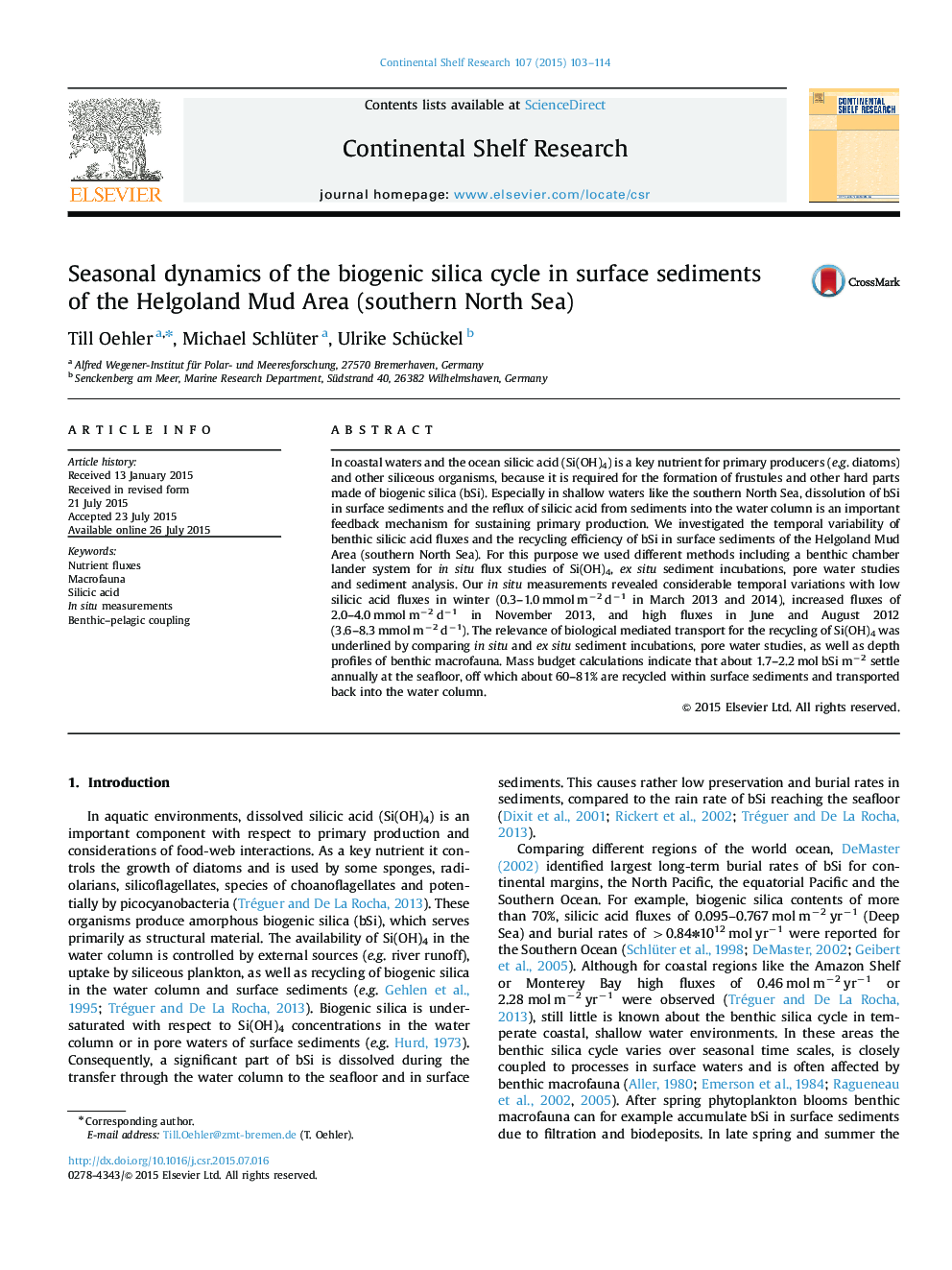| Article ID | Journal | Published Year | Pages | File Type |
|---|---|---|---|---|
| 6383078 | Continental Shelf Research | 2015 | 12 Pages |
Abstract
In coastal waters and the ocean silicic acid (Si(OH)4) is a key nutrient for primary producers (e.g. diatoms) and other siliceous organisms, because it is required for the formation of frustules and other hard parts made of biogenic silica (bSi). Especially in shallow waters like the southern North Sea, dissolution of bSi in surface sediments and the reflux of silicic acid from sediments into the water column is an important feedback mechanism for sustaining primary production. We investigated the temporal variability of benthic silicic acid fluxes and the recycling efficiency of bSi in surface sediments of the Helgoland Mud Area (southern North Sea). For this purpose we used different methods including a benthic chamber lander system for in situ flux studies of Si(OH)4, ex situ sediment incubations, pore water studies and sediment analysis. Our in situ measurements revealed considerable temporal variations with low silicic acid fluxes in winter (0.3-1.0 mmol mâ2 dâ1 in March 2013 and 2014), increased fluxes of 2.0-4.0 mmol mâ2 dâ1 in November 2013, and high fluxes in June and August 2012 (3.6-8.3 mmol mâ2 dâ1). The relevance of biological mediated transport for the recycling of Si(OH)4 was underlined by comparing in situ and ex situ sediment incubations, pore water studies, as well as depth profiles of benthic macrofauna. Mass budget calculations indicate that about 1.7-2.2 mol bSi mâ2 settle annually at the seafloor, off which about 60-81% are recycled within surface sediments and transported back into the water column.
Related Topics
Physical Sciences and Engineering
Earth and Planetary Sciences
Geology
Authors
Till Oehler, Michael Schlüter, Ulrike Schückel,
